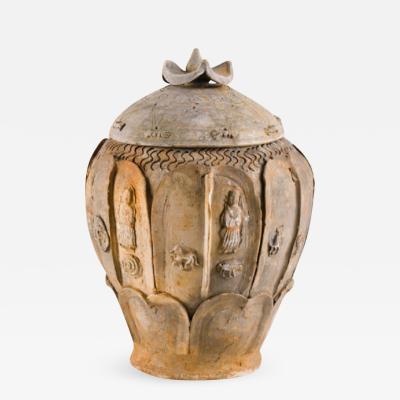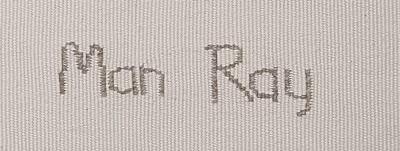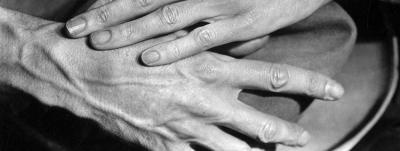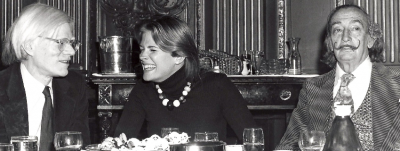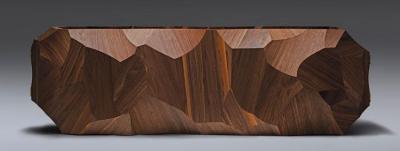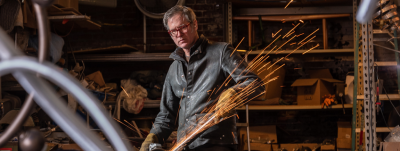Winterthur Primer: Picturing China
For several centuries after Portugal established direct trading routes with China in the 1500s, Westerners clamored for the luxurious silks, fragrant teas, and delicate porcelains increasingly available to them. They became fascinated with the exotic land they would never visit, their curiosity never fully satiated with written descriptions from travelers to the Far East.
Beginning in the early 1700s, Chinese artists created watercolor and gouache views of landscapes, people, and more, sometimes in sets, for export to Europe, and directly to America after 1784.1 One popular set of four scenes depicted the route taken by Western ships sailing to Canton. The route began at the mouth of the Pearl River, in the Portuguese settlement of Macao, where supercargoes bargained with customs officials and hired local pilots to guide them further along. Boca Tigris, or Tiger’s Mouth, where the Pearl River narrows, was the second port before stopping in Whampoa. Ships officers and crew remained here, while supercargoes boarded Chinese junks onto which their Western merchandise was loaded for transport for the remainder of the twelve miles in shallow waters. The final destination was the Western-style trading offices, also known as hongs or factories, situated just outside Canton’s city walls (Fig. 1). Traders were generally restricted to this quarter mile area while transacting business.
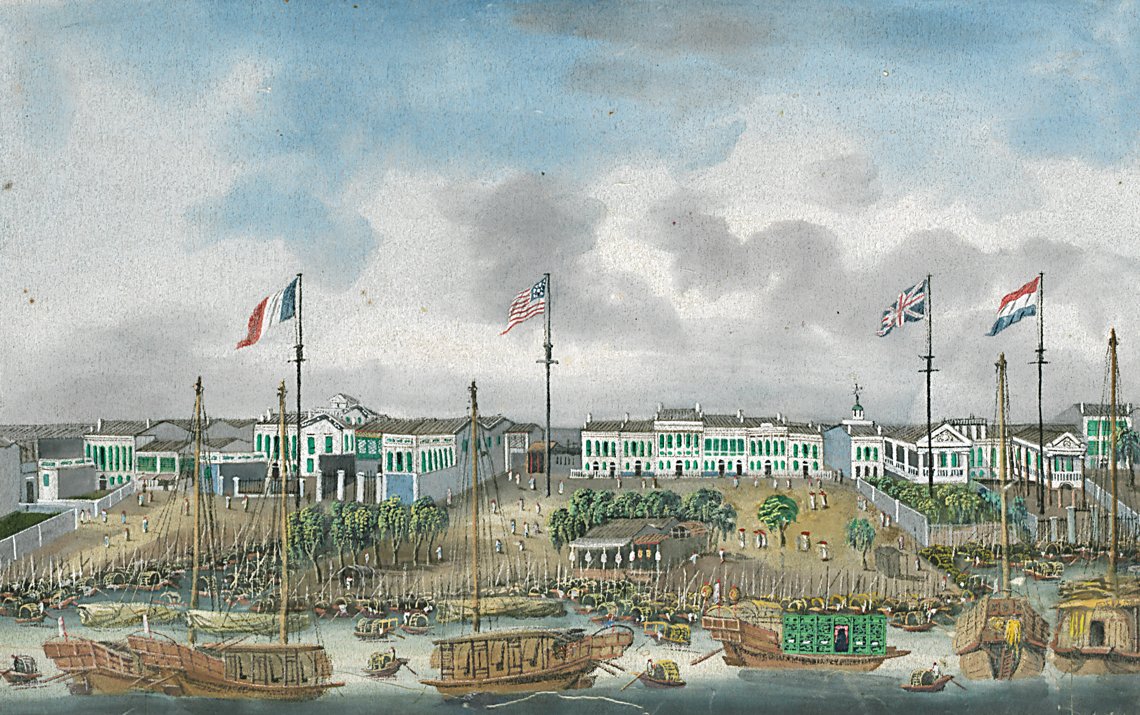 |
| Fig. 1: Trading offices in Canton identified by residents’ national flags, ca. 1820–1840. Watercolor on pith paper, 8¼ x 11 inches. Framed with silk ribbon. Bound in album with three other port scenes (Collection 111, 03x144). |
 |  | |
| Fig. 2: Domestic interior showing women playing the board game weiqi, ca. 1800. Watercolor on paper, 14¼ x 19⅛ inches (Collection 111, 91x75.82). | Fig. 3: Botanical drawing with butterflies and insect. Watercolor on paper with pre-1794 J. Whatman watermark, 14¾ H x 19½ inches (Collection 111, 91x75.9). |
Longer series of twelve or more images provided a visual explanation of how porcelains, silks, and teas were manufactured, decorated, cultivated, packed, and shipped.2 Other well-represented subjects were flora and fauna, figures in native costumes, boats, furniture and other household goods, and commercial and domestic interiors (Fig. 2). Scenes with tradesmen, peddlers, performers, festivals, and even criminals being punished were also painted. While many scenes were idealized, botanical drawings for the express purpose of scientific study display a high level of detail, even illustrating withered and damaged leaves (Fig. 3).
The sheer number of extant watercolors reveals the magnitude of this artistic industry. However, little is known about the artists who toiled, mostly anonymously, in Canton workshops conveniently located near the Western factories. Their work was mass-produced and not highly valued in their own country, resulting in few signed items.3 Ascribing dates to drawings is also problematic, although there are clues. Silk was frequently utilized as a base in the earlier decades of the 1700s, but few such watercolors exist today. By the 1780s, drawings were commonly produced on imported European papers, especially high-quality ones like those of English manufacturer J. Whatman, either sold individually or bound in albums for easier transport. Growing demand in the early nineteenth century caused a decrease in size and quality. Paper made from the pith of a native Southern Chinese plant, mistakenly referred to as rice paper by Westerners, was often used for smaller drawings; sheet edges were adhered to a secondary support with silk and paper strips. Several pages were then bound together between thin boards covered with colored, patterned fabrics. Cracks now seen in pith paper caused by humidity changes attest to its inherent fragility. A transition from more delicate colors to primary ones also happened close to this time.
The demand for export watercolors declined toward the end of the nineteenth century as the China trade waned and photography became widespread. Despite their romanticized nature, these watercolors are a stunning visual record of a bygone era.
Jeanne Solensky is a librarian and the interim head of the Joseph Downs Collection of Manuscripts and Printed Ephemera and the Winterthur Archives, Winterthur Museum, Garden & Library.
This article was originally published in the Summer 2018 issue of Antiques & Fine Art magazine, a fully digitized version of which is available at afamag.com. AFA is affiliated with Incolllect.
2. The Winterthur Museum has two sets of watercolors showing the manufacturing of porcelain (1956.0038.106-.128 and 2003.0047.014.001-.010).
3. An artist’s name found on a drawing or a trade label inside an album usually denotes a studio owner.















